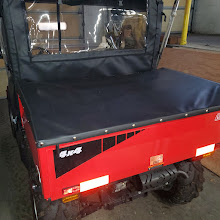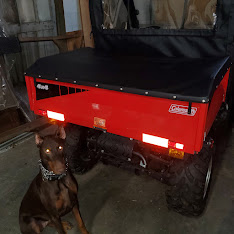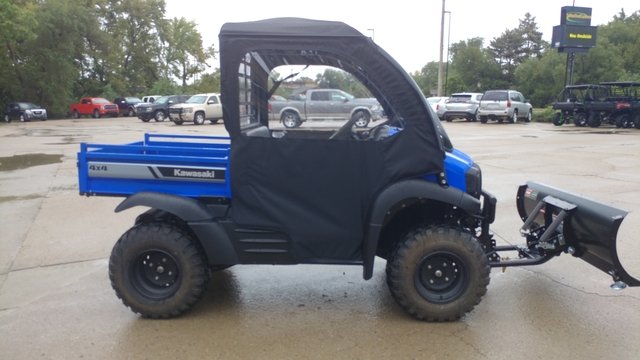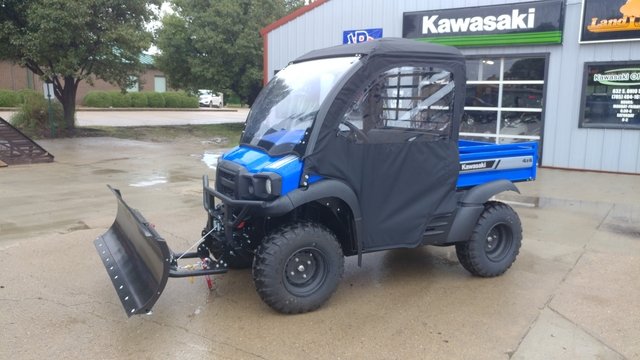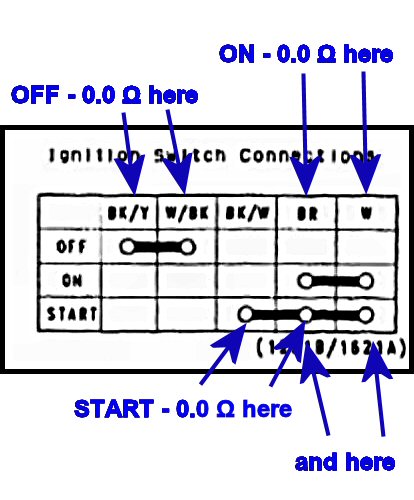Leaderboard
Popular Content
Showing content with the highest reputation since 05/17/2020 in all areas
-
Since I've seen some questions on this I took some pictures and will provide instructions on a valve adjustment for the UT400. This should be the same for the 550's and other various Coleman/Hisun single cylinder models with the cylinder slanted aft. I have seen several people ask of it is really necessary, and read several reports of valves being out of adjustment from the factory. My valves were .004" intake, and .010" exhaust with about 5 hrs on the machine. I've seen different numbers thrown around for factory spec, but I decided to go with 0.005". This is called valve lash. What is is is a gap between the rocker arm and the valve then the camshaft isnt opening the valve. Why does it matter? If it's too large the valve doesn't open all the way, if it's too small the valve dosent close. This can cause valve damage (overheating) as well as loss of engine power (burned fuel is going out exhaust rather than pushing the piston dow). Tools required : 5MM Allen wrench, 10MM box wrench, needle nose pliers, flat feeler gauge set, rags First you need to remove the fan cover on the passenger side. There is a cooling vent hose on the back side, remove the hose clamp and slide it off. From there there are 4x 10mm bolts holding the cover. The forward ones can be accessed from under the seat. Next remove the spark plug from the drivers side. Carefully wiggle the spark plug wire off. Grip it as low as possible and give it a little twisting motion as you pull it off to help free it. Its a tight fit for a socket, but there is a sheet metal wrench in the toolkit that fits it. Unscrew the plug and set it aside. This allows you to spin the motor over freely with no compression to fight. When you reassemble this is a good opportunity to switch to an NGK iridium plug for better performance/less fouling DR8EIX) Next you need to remove the intake and exhaust valve covers. The intake us the forward one. There are 3x 5MM Allen screws to remove. The Exhaust is the rear with 2x 5MM Allen bolts. Both covers have O-Rings instead of gaskets and are reusable. When you remove the rear be careful and use your rags as there will be oil that drips out. Next up we need to spin the motor over to top dead center. Grab each rocker arm and give em a little wiggle up and down. Spin the engine over by grabbing the fan with your other hand. Spin the engine over until both rockers have some wiggle and are loose. Once both rockers are loose slide the feeler gauge in like shown above. Try different feelers as needed to determine your starting spec. You should feel some drag but still be able to move the feeler without too much force. If you need to adjust, use the 10MM wrench to slightly loosen the locknut, then with the correct feeler gauge in place, tighten the top square nut while wiggling the feeler in and out. Once you have it right you need to tighten the 10mm lock nut without moving the square head bolt. Once the lock nut is tight recheck the clearance. That's it, button everything back up and make sure you have it all reassembled before running it again. If you find this helpful give me a thumbs up or comment. If you have any questions or need more help let me know. If there's interest maybe I'll do some more of these6 points
-
Hey Folks There are not a lot of good sources out there for troubleshooting and diagnosing ECU problems with the Massimo Buck, Bennche Bighorn, Bennche Cowboy, & Cazador machines that use the Delphi MT05 ECU. They are all basically the same with different badging, so I thought I'd share some info that I found during some searches. I was trying to help someone diagnose and repair a hard starting issue. The ignition coil was throwing a 0351 code. I discovered how to read codes without an OBDII code reader. The following procedures should help you check your fault codes and clear them if needed. Fault Code Troubleshooting for Delphi MT05 ECU on the Massimo Buck 400, Bennche Bighorn 400, Bennche Cowboy 400, and Cazador 400 *NOTE: The MT05 ECU is not really OBD 2 compliant. It is much more similar to an OBDI system. The MT05 ECU controls either 1 or 2 cylinder engines commonly found on Massimo, Bennche, and Cazador. Much of the ECU info was found here: https://netcult.ch/elmue/HUD ECU Hacker/Delphi MT05 Manual.pdf Delphi EFI System Design Delphi EFI employs 5 sensors to monitor engine performance. 1. Crankshaft Position Sensor 2. Coolant Temperature Sensor 3. Oxygen Sensor 4. Throttle Position Sensor 5. Manifold Air Pressure/Manifold Air Temperature (MAP/MAT) Sensor Delphi EFI employs the following system components. 1. MT05 Engine Control Unit (ECU) 2. Fuel Pump 3. Multec 3.5 Fuel Injector 4. Idle Speed Control Valve (Idle Stepper Motor) 5. Multec Ignition Coil 6. Fuel Vapor Canister Purge Valve Using the Digital Dashboard to Decipher EFI Trouble Codes In addition to commercially available diagnostic scan tools (Big $$$), you can use the engine warning light of the Siemens dashboard to diagnose most of your EFI problems. The digital dashboard receives signals from the MT05 ECU, and the engine warning light will flash a diagnostic trouble code (DTC) if the ignition key is switched on/off for three cycles. When you turn on the ignition, the engine warning light will illuminate, which indicates the EFI system is operational. After the engine is started, the engine warning light will extinguish if the EFI system is working properly. However, if the engine warning light remains illuminated, it indicates the EFI system is not working properly, and there is a system component failure. Deciphering Diagnostic Trouble Codes To read the diagnostic trouble code (DTC), open and close the ignition key three times in rapid succession, as follows: open/close—open/close—open. At this point the engine warning light will flash a DTC which indicates the fault in the EFI system. Refer to the attached fault code table to identify the corresponding problem. The engine warning light will emit a sequence of flashing lights. If the light flashes 10 times, the translated number is 0. If the light flashes one time, the translated number is 1, et cetera. For example, if the MAP/MAT sensor is disconnected, or the connector is shorted to ground, the engine warning light will flash in the following manner (This is an example only). The engine warning light will flash 10 times: The first number of the DTC is 0 After an interval of 1.2 seconds, the engine warning light will flash 1 time: The second number of the DTC is 1 After an interval of 1.2 seconds, the engine warning light will flash 10 times: The third number of the DTC is 0 After an interval of 1.2 seconds, the engine warning light will flash 7 times: The fourth number of the DTC is 7 The resulting DTC is P0107. NOTE: For the system I was helping to troubleshoot, I suspected an ignition coil failure due to the code that was thrown. When it was checked, it was flashing: 10, 3, 5, 1. The 10 represents a 0. So the actual code was 0351. After finding the code, the coil wire was checked and discovered loose at the spark plug. Once it was pushed fully on, the problem was fixed. Most likely, this problem was created after the owner had pulled the spark plug to check the gap. The ECU was rebooted using the procedures detailed below with no more codes being thrown. If there are other fault codes, the engine warning light will flash the next code in 3.2 seconds after finishing the first sequence. After all existing fault codes are flashed, the engine warning light will repeat the fault codes in a loop sequence, until the ignition key is turned off. To clear fault codes you either need an OBDII Fault Code reader and a Delphi 6 pin connector adapter cable that you have to order from China and wait 8 weeks…OR....you can simply reboot the ECU using the instructions detailed below. Rebooting the ECU Perform the following steps to reboot the ECU. 1. Turn off the ignition for 15 seconds. 2. Turn the ignition on/off for 5 cycles. Make sure each cycle lasts about ½ second, verifying the start of the fuel pump for each cycle. If the fuel pump doesn't start during any cycle, begin the entire reboot procedure from the beginning. 3. Turn off the ignition for 15 seconds. TPS (throttle position sensor) re-learn procedure after rebooting ECU. This should be done after replacing the TPS or the ECU....and it is advisable to check proper idle after rebooting an ECU too. Source: ECU Hacker (Reworded process slightly to make it a more sensible flow in my mind): 1. Turn the idle screw one full turn clockwise before starting 2. Start the engine, and run at low idle until the engine warms. Maybe a couple of mins. 3. Idle should be above 1500 rpm. If it isn’t, turn it up to 1700 then shut the engine off. Do another reboot of ECU. 4. Restart the engine and let it stabilize at 1700 rpm. Then turn the idle screen down to 1500 rpm and let it stabilize for a few seconds. Once it stabilizes, set to the final recommended idle speed for your machine. The placard under (or behind) your seat should show idle speed, valve adjustment, spark gap, etc. Typically the 390 cc engines in the "400" machines run at 1600 rpm idle. 5. Shut it down. Wait 10-15 seconds before restarting. The procedure is now complete. Final Notes: I have included pictures of an OBDII connector and the Delphi 6 pin connector in case anyone wants to go buy stuff off ebay or local parts suppliers and build a connector to use for an OBDII reader. But...you can save money and simply do the same thing with code reading and resetting using the check engine light on your dash. Some folks prefer to do it with code readers. Hope the information provided helps if anyone ever needs it but cannot find it in repair manuals. I discovered most of this in some motorcycle forums. The source for the diagrams is here: https://netcult.ch/elmue/HUD ECU Hacker/ Be advised: I am not a service technician. I do not endorse any manufacturers. I do not get paid to help, nor do I want to. This is just a hobby of mine. I enjoy working on things and solving problems. If you run into a weird problem that stumps you, give me a shout. I may be able to give you some ideas...or not. Just know, that troubleshooting thru emails can be challenging. The more info you can provide, the better. Otherwise, I will probably ask you a ton of questions. The good news is, the Delphi system used on these machines is essentially an OBDI and it is very simplistic. If you are methodical and patient, most of your "problems" can be figured out thru a process of elimination. Always go for the simple things first before throwing money and sensors at a machine. Take care - JT5 points
-
In order to connect with the ECU we need two cables. The first is a USB ODBII cable. HUD ECU Hacker’s documentation has a lot of different confusing options, but here’s what I went with and managed to get working, the cable is called “VAG KKL” it is a USB to ODB2 cable. It is available from a variety of sources for $10-15. The second thing we need is a “6 pin delphi to ODB2” adapter cable. It is also available for a similar price. In my case I ordered both from ebay, but there are other sources. Once we have our cable in hand we need to find the plug it in on your machine. My personal rig is a Coleman UT400, but the wire location should be similar for all Hisuns. My cable was located under the middle of the seat area. Just inboard of the battery, where the main wire harness split loom runs. The cable is a 6 pin (3x2) with a dust cap. Remove the dust cap and plug in the 6-pin end of the Delphi adapter cable. Note: When I was done, I left the 6-pin adapter connected, and zip tied it so it now runs to in front of the battery for easier access in the future. Next download and install HUD ECU HACKER DOWNLOAD Open HUD ECU Hacker on your PC It should prompt you to choose a driver to install. This particular cable uses the “CH340” driver (First choice on the menu) click to install, once installed hit the X in the corner to go back to the main page Once the driver is installed plug in the USB Cable, and plug the ODB2 end into the 6 pin adapter. The red led on the adapter should light up indicating it has power. Drop down and pick a com port on the main screen, it should show the VAG KKL adapter as a com port. Click connect on the main menu. It will pop up a bunch of fast scrolling text indicating it is connecting. Once connected you can click through the various tabs to see different data sets. The main menu also has the option to show fault codes, clear fault codes, reset the EPROM back to factory. The other function that may be helpful is recording a log file. You can record a log while operating the unit, and come back later and replay it to try to better diagnose what is happening. Within the various pages you will see the reading from each sensor. Sometimes a sensor reading will be off enough to cause running issues, but not enough for the ECU to realize its an issue. For example if the engine thinks it’s really warm, but its actually cold, it may not inject enough fuel to start. There are also more advanced functions, like adjusting fuel mapping, but that is beyond the scope of this tutorial. Full HUD ECU Hacker Documentation (Very technical reading) If you find this helpful give me a comment below or a thumbs up.5 points
-
White smoke is usually coolant leaking into the cylinder. Sounds like a blown head gasket to me.4 points
-
Just wanted to give update . It was the ecm. Put new one on and got spark immediately to front cylinder. Ran but smoking and no power. I checked back cylinder and no fire. Pulled coil to check with meter and found wire was not getting good connection where it plugs into coil. All good now . She will scream !!!. Next is to figure out why 4x4 switch wont turn. Thanks for all the imput....4 points
-
Hello to anyone who reads this. I am Jon and I own J&M Outdoor Power, a very small, small engine repair shop. I was approached by Coleman about 6 months ago to become one of their Warranty Centers. I recently received 3 different UT400's and a UT500 all with similar issues. These units range from 2 months to 2 years old. Customers state that the unit(s) was/were running fine, then heard a pop and a loss of power, two would no longer start. The two that would run would not achieve normal operating speed (around 20mph I would say) without redlining the RPMs. I quickly found that the Valve lash on each unit had become too large on some(both intake and exhaust) and too tight on one(just intake). After setting the gaps to .005(I found multiple different people suggesting bigger and smaller gaps, but no definitive Coleman Spec number yet) every unit starts, runs, and achieves top speed without issue. I don't know how many others have come across these issues, and I wanted to get something out on the web for others in the same predicament. Please let me know if you have had similar issues. Edit: I realize that this will not be a fix all solution for this issue, as the oil level and condition should be verified before moving to the valves. Many times improper oil conditions will cause valve lash to change. These units all have good oil and proper oil changes.3 points
-
Hello again! I now have a pretty good running Coleman UT400 after a top end rebuild, wet clutch rebuild and a repaired crankcase... ! It plows snow great, but I was also having the jumping out of gear problem, mainly reverse, but a couple times out of forward. I would quickly place it in N and then let the engine idle down and shift again. This worked most of the time. I did some research and found that some have modified the shift linkage. The problem with just adjusting the shift cable is that it really NEEDS more throw, not an adjustment. From what I've read and viewed on the Internet, the linkage arm needs to be about 3/4" longer to gain more throw in both directions. On YouTube, the guy had to remove the shift linkage hole trim and notch the side of the dash to get the shift linkage off the pivot pin. BUT this is NOT necessary. When the "E" clip has been removed and you fish it out of the firewall somewhere, the shift lever is now loose. I had to pop the top of the shift knob off, remove the retaining screw and then heat the lower portion of the knob to get it to come off the lever. Once you have the shift lever loose, push it towards the right to slide it off the pivot shaft. But it won't come off just yet. Use a small pry bar/screw driver and slide the nylon flanged bushing out of the left side of the lever. This lets the lever slide off and get into a "loose" condition and it will twist and come right off without removing the dash trim, that could be a bugger to get back on correctly. Once the lever is off, press out the other bushing so when you're welding on the linkage arm, you don't melt the bushing. I found a piece of scrap metal the same thickness as the lever arm, just over 1/8" thick, close to 3/16". I cut my arm and beveled the edges for better welding. I added a piece just over 5/8" long and kept about a 1/16" gap between the arm and the new piece. Once welded on bother ends, it adds up to just about 3/4" or so. I reinstalled the lever after painting it and did an adjustment on the cable. By the way, it's easier to remove the cable from the bracket on the frame. This gives you more clearance to maneuver in that area with your hands. ALSO, you will need to get a 12" adjustable wrench and slide it over the cable mounting bracket and tweak, to the front, the steel so the cable is pointed upward a bit to now realign with the new longer shift arm lever. There's more than enough metal for the tweak and it will line up perfectly. I now bottom out the shifter on the transmission BEFORE I run out of throw on the shifter... I've tested it just a bit so far and it shifts much better with the longer throw. One of the Coleman authorized repair facilities said that he worked with Coleman to get a new part that's longer by 3/4". He's modified a few and it works perfectly for him. Just doing the cable will just short you on the other end. Here's some pictures of my modified shift lever etc.3 points
-
3 points
-
I have come to the conclusion @Joe Toup must be one of the very best, most helpful members here!!! He has been tireless sharing his knowledge and expertise helping me solve a problem. I am sure I'm near a good solution thanks to Joe!!👍👍👍3 points
-
There are actually 5 disc brakes on these machines. 1 for each wheel and 1 on the rear driveshaft for the parking brake. I've read several complaints of the parking brake one being too tight from the factory so I would check the cable and make sure there's a little slack when the parking brake is released. If that is good I would jack up each corner Individually and spin the wheel to listen for noise and feel for dragging. That should help pinpoint where the issue is.3 points
-
anybody else getting spam /fraud private messages on here besides me? How do I report it? He calls himself Maria .under ORANGE 15 name.. wants to hook up in UTVs .. con artist in Pakistan probably.. Cant ADMIN block this crap ? geesh3 points
-
Just looked at the Lowes add for that, pretty much looks like an MSU 500/700 that Hisun made for Massimo back then. Take a good look at the badging on parts to see who it's actually made by, my guess is it's still Hisun.3 points
-
Its my 2nd day on this plat form. I'm new here in this community but in these two days I got some Premium recommendations. I was in search of these recommendations form the past few months. Thanks you so much for creating such kind of the community. Regards: Zeeshan Mehmood3 points
-
Put 15 miles on it today mostly on the beach in 4WD--the front diiferential is definitely smoother and quieter, and engaging/disengaging 4WD and front lock more positively with the ATF...3 points
-
14 downloads
Here are a couple more 3D printer files for the HS400/Coleman UT400 & Outfiltter 400. Included in the .zip file are my version of a seat belt interlock defeat insert (SeatBeltThing-01.stl) and an oil filler adapter allowing a 1/2"I.D. hose to be attached making adding oil a less messy operation (OIlFiller-whole-03.stl) --both may also work on other UTVs with similar the seat belt connectors and a 3/4" x 10 threaded dipstick...3 points -
3 points
-
3 points
-
3 points
-
3 points
-
3 points
-
Are you talking about an electric heater? if yes its likely too much current. There might be 10 amps of available current coming out of the rectifier that isn't already claimed by the ECU and factory lights. 10 amps @ 12V = 120 Watts, which is about what an electric heating pad runs. If you're talking about a fan for a engine coolant based heater it's probably ok. If you have accessories and the running voltage is below 13.5V you have too much stuff attached. If the battery light comes on it means the battery is actively being discharged while running. Stator based charging systems on these things and tractors etc are really meant to power the ECU and factory systems not to provide a lot of extra power for other stuff, it's not like the alternator on a car.2 points
-
The main trick is tilting the front end up. Block the rear wheels and jack up the front end at least a foot. A convenient ditch works well also.....rear wheels in a shallow ditch. The head bleeder screw should be opened. With the engine NOT running, almost fill the radiator (leave some air to avoid a mess) and burp (squeeze the lower hose line before the metal tube at the engine base passenger side floor area). Watch the radiator and the the bleeder. With the radiator "higher" than the head bleeder, the air should be bled and coolant dribble out. Close the bleeder and refill radiator (your clue you displaced the air with coolant) and start the engine. Burp more while running and if you get the circulation going the hoses will warm up. More bubbles should surface at the radiator filler neck. Shut off engine. Open bleeder and release any air in the head. The puke jug needs to be filled about an inch above the full cold line. Use a shop towel as a "seal"and use an air nozzle to SLIGHTLY pressurize the puke tank removing the air from the tubing line to the radiator neck. Then the radiator starts to overflow, a third hand can install the radiator cap. Run the engine and determine the head and hoses are at the close to the same temperature (as in warming up) through out the system. IR temp gun....fairly cheap now....can get real numbers. Scan the radiator, hoses, cylinder and head.....if all close you are done. Recheck fluids when done riding. Recheck the bleeder and top off the puke jug as required.2 points
-
my Hisun in my Massimo , sold by Tractor Supply, assembled in Dallas, say Made In China on every part of all of it .. Altho it now has multiple Yamaha parts mixed in. lol2 points
-
I finally found a service manual in stock and was able to make the adjustments per the specs!2 points
-
2 points
-
Paint chip is no good, but doubtful that it made it thru the filter, so it's likely been there, or got knocked off when you were working on removing things. Code 201 indicates that it is getting a weak or unexpected signal from the injector. The fuel metering is done by pulsing the injector open. The ECU expects it to be X resistance and it gets Y resistance instead and throws a code. This could be a failing injector (the internal solenoid may be failing) a loose or intermittent connection, chafed wire partially shorting to ground, moisture or corrosion in a connector, etc. It's likely intermittent, but will eventually get worse. When it's happening it will throw the code and give the engine the wrong amount of fuel causing stalling, performance issues, no start, etc. If it were me I would visually inspect the Injector wiring for chafing, check inside the connectors, and if I didnt find anything just throw a new injector at it. You can also check resistance of the injector, but if it's intermittent it may check out ok when you happen to check it.2 points
-
https://www.colemanequip.com/parts/details/KubotaParts/Kubota-Front-Accessory-Box/K7311-99560/ You might also see what a local or nearby Kubota dealer can get it for. 99% Of the time they won't charge shipping when it's shipped to a dealer.2 points
-
The real problem, as I see it, is that the codes given are consistent with an engine that's running poorly. So imho, if it's not running with a substantial miss, then something else is going on. Like a possible failure of the CPU. Manufacturers are typically reluctant to give away parts without a reliable, trusted diagnosis of failure, such as that provided by an authorized service center. And a new CPU could be quite expensive, with no guarantee that'll cure the problem. Throwing parts at it is never a good plan anyway. Fixing it yourself, could be a long, expensive, frustrating endeavor. Complete with long down times, and fairly involved diagnostic procedures. If it were me, I'd try to make it Lowe's problem. By any means necessary, including a return.2 points
-
I was under the rig playing today so I decided to adjust the parking brake just to make sure it was ok, since I've read a couple people having them adjusted too tight from the factory. First picture is the parking brake disc & caliper from the passenger side. Second picture is the adjustment bolt. How it works: it's a cable operated disc brake with a locking pawl to hold it where you push the pedal to. Procedure: The pad tightness is adjusted by moving the bolt in the 2nd picture in and out. When you tighten it it pushes the pads together. The extra nut on it is a lock nut. Using a 13mm wrench loosen the lock nut. Back it off about halfway just so it's out of the way. Next tighten the bolt by hand until it stops. From there back it off about a half turn. Push the parking brake and make sure the pedal "locks up" before running out of travel. If it doesn't adjust the bolt slightly tighter and try it again. Once you're happy with the adjustment tighten the lock nut while keeping the bolt stationary.2 points
-
2 points
-
Really hard to work out what happened. My view would be that it was a loose connection, If it was a battery going up, it would have been caused by a gas explosion and at least one of the batteries would have made a fair noise when it went, but if it was a poor connection then heat could have built up, to the point where the plastics melted and caught . Hard to track it down now, but a quick check of whats left of the cables could show up where one was loose. Such a horrible event. There have been other comments on a FB page when a faulty / inconsistent vehicle turned out to be a poor connection on a battery terminal. Personally I would swap the horrid 10mm headed painted battery bolts for m8x 20 Stainless screws and washers with single springs. Worth regularly checking their tightness. Another alternative cause could be the 12v battery. I have found one that was totally shot. But its not apparent to the user as the DC to DC runs continuously even when the ign is turned off. In this case a duff 12v battery will simply get hot and over heat, when over heating the electrolyte boils off, when plates touch they can spark and ignite the hydrogen inside the battery. My suggestion to users is to get a multimeter go under the drivers seat, find the 12v battery and (behind the drivers legs) and check the voltage (negative is towards the centre positive towards the side panel). Note the voltage. Hit the big red button. That breaks the 48v circuit. The DC to DC will shut down. Leave it for 10 minutes. Re check the 12v battery. If its well above 12v it should be OK , if not then your battery may need topping up , or replacing. If below 12v then its a replacement, as its way under voltage, and probably has one cell dead.2 points
-
2 points
-
2 points
-
2 points
-
Hydrogen combustion and Hydrogen Fuel Cells are the only "green" solutions that makes sense. Too bad finding fueling stations still isn't anywhere close to where we need to be.2 points
-
I'm having a similar issue with my Coleman UT400, but it started after we left it out in the rain over night (we usually keep it in the garage). We were expecting a large delivery, so needed the garage space for a couple days, and got an unexpected rain shower. When I went to bring it back inside, it turned over fine, but would not fire. I ordered/replaced the CDI, voltage regulator, and coil and still would not start. Cleaned the plug, and it fired right up ... this time. After a few short runs, it quit starting again. The plug was wet fouled with fuel. The same NGK DR8EA as mentioned above. I picked up a couple new ones, but now I have to rotate those in about every 3 starts ... either it won't start, or shortly after starting, it will stall and not refire. Also, when a new/clean plug (I clean them with alcohol and then sandblast them real quick) is put in, it will crank in a couple of seconds, but subsequent attempts will take running the starter motor for 10-15 seconds before it fires. Googling brought me to a page that said Hisuns were bad about bad/dirty injectors causing fouling (I have always run premium with stabilizer in it), so I ordered and replaced the injector too but experienced the exact same issue. Seems like the next thing to try would be the ECU, but that's a little pricey, so I'm hoping for other suggestions before I go there. Now, I did try a hotter plug (DR7EA) and it seems to not foul as quickly, but from the get-go it has taken a lot of cranking on the starter to get it to start up, but seems to run better once started.2 points
-
2 points
-
Actually, the Massimo's are now made by Linhai. Although the grill on my TBoss550 says Massimo, there are Linhai stamped parts everywhere else. But agree with Travis, alot of Hisun owners reporting problems here.2 points
-
2 points
-
2 points
-
Go to Engine Coolant Sensor on top of the head.....will look like a mini spark plug. Single wire. This runs to ECM. The sensor is a special resistor that changes resistance value.....most are NEG....meaning the value goes down as the probe end in the coolant gets hotter....and of course the reverse also for R high at low temp. Test time DVM DC VOLTS. Pull and probe the ECT plug....KEY ON. You should have +5 ish Vdc....source is ECM signal input that has an INTERNAL resister in series to +5 source. The DVM "sips" current....thus NOT A LOAD. Next....DVM R range. N to head body and P to sensor tip connection. You should have some resistance (don't have specs) say cold 10K to 100K. An open sensor pellet will be INFINITE...same as leads apart.....which is bad. Your message stated the Error Code was high voltage or open circuit. With out a load....Meter doesn't count.....you get +5Vdc from ECM at ECT sensor connecter. If ECT is good (a resistance load) AND wiring is good, the voltage will be less than +5 due to voltage divider action. The changing sensor will change the inputs voltage....calibrated to temp to control fuel delivery.....Like the TPS, a swing from 1V to 4V. That's how it is supposed to work. Your problem is one of 3 items harness/connectors/ECT. If no +5 at connector, check at ECM....if good, find the open ckt. The open circuit makes the ECM think it is at the South Pole @ - 40 deg C....dumps extra fuel for a COLD start. Check spark plug for sooty black or wet electrode....clean and dry or start with a fresh plug because fouled plugs may look sorta ok, but no or weak spark. CHOW2 points
-
That looks like it might work, I was mislead by an eBay listing to believe the thread was 3/4-10--however I just measured the good filter I have--it is indeed M20 x 1.5. I corrected the dimensioned photo posted above...2 points
-
Here's a couple shots of mine--I had to "re-brand" it as an LSV (Low Speed Vehicle) to make the State of Florida happy (they had to do a physical inspection, I figured it would not hurt to badge it as an LSV) and get it registered: (made it into an "Outfitter LSV" with 3D printed badges--just used that gray 3M double-sided tape to stick the low-speed placard on; we had just been calling it "the thing"--"Thing 1" was what my great-granddaughter thought it should be called. I thought "Thing 16" as it's a "4x4", but my wife said no one would "get" it... I have a thread re: the Briggs muffler/cheap noise reducer--works great with the end-cap perforations opened up to 5/32" (from 1/8" OEM, a 56% increase). Took it off a few days ago, just made it louder--no power change at any RPM--put it back on to make myself less obtrusive... The flag decal is the "Bonnie Blue Flag"; of the Republic of West Florida and an early flag of the secessionist States during the War of Northern Aggression.2 points
-
Going to pick my new Mule Pro FXT Camo tomorrow. Central Fl. First UTV ive owned but have had several 4 wheelers over the years.2 points
-
I have never liked the cord in the glove box to charge the E1. It takes up to much room and in the winter the cord is very stiff. So I decided to install a charge port like the EV's have. I purchased a weatherproof socket to install in the side of the E1. Wired the charge cable to the socket and installed it. So much easier now to plug the charge cord into the socket, and I have more room in the glove box. On another note: Since I have owned the E1 I have noticed a rattle in the right front area but I never could locate it until last week when I had the E1 up in the air on a lift. When I grabbed the right front wheel it a play in it. So I removed the wheel and torqued the nut on the drive shaft and the play is gone. I am thinking when it was assembled the nut was just hand tightened and the cotter pin installed. I also found that the left front nut was not tight either. Backs were OK.2 points
-
View File Coleman HS400 3D printed parts Here are a few little parts I made for my new coleman 400. One is a dummy seat belt clip to make the speed limiter think a belt is engaged (for diagnostic purposes only, do not ride without your seat belt on.) Another is a replacment for the circular grommets in the front corner of the bed. The last is a replacement for the rectangular cap at the rear of the frame near the hitch. Parts may need a little sanding depending on your print settings. Enjoy! Submitter tsheh4 Submitted 04/16/2021 Category Coleman2 points
-
Your wiring diagram provides the ignition switch contact "rules" for its various positions--you can test it by checking continuity with an Ohmmeter as shown below: Connect the Ohmmeter to the wires/terminals as shown and check the resistance with the key in the indicated position--it should be 0.0 Ω or no more than 0.2 Ω.. This procedure tests the switch at low voltage and current as used by the ohmmeter, however it will be a valid indicator of the switch's functioning properly... Note: this test is performed with the switch NOT plugged into to the vehicle. In "OFF" there should be 0.0 Ω between the black/yellow and white/black wires In "ON" there should be 0.0 Ω between the brown and white wires In "START" there should be 0.0 Ω between the black/white and brown, black/white and white, and brown and white. The "OFF" position connection of the black/yellow and white/black wires grounds the ECU when the switch is off--a safety precaution against static discharge no doubt. -cliff-2 points
-
Actually you can, the real differences between GL-4 and GL-5 are nearly negligible. GL-5 is claimed to handle shock loading better than GL-4; and be slightly more "slippery" making the EPA happy.. If I had an axle with dirty oil that really needed to be changed, and had nothing but a bottle of GL-4 on the shelf, I use it and not lose a moment's sleep...2 points
-
sometimes that can be a sign of an ignition system part failing.. i'm not up to speed on the Massimo ignition systems as to if there magneto and flywheel fired, or CDI off of battery. had a similar issue with a car awhile back, run and get warm and shutoff, wouldn't restart for awhile until cool. turned out to be the ignition coil. after it dies i would check for spark, either by removing the spark plug and reinstalling the wire and grounding the spark plug against the engine and looking for spark, or by removing the plug and spraying carb/parts cleaner or starting fluid down the plug hole or intake.2 points
-
Aren't fault codes (if found), automatically displayed on the dashboard? Typically with other models, it'll blink a sequence to the dashboard clock, that's then decoded to provide the coresponding code. But even if you find a code reader, I'd be surprised to see an OBD2 port. More likely it's a Delphi.2 points
This leaderboard is set to New York/GMT-04:00




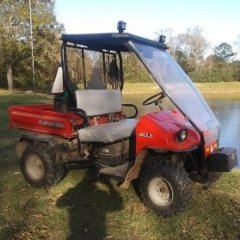
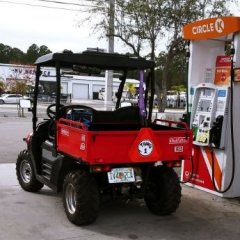





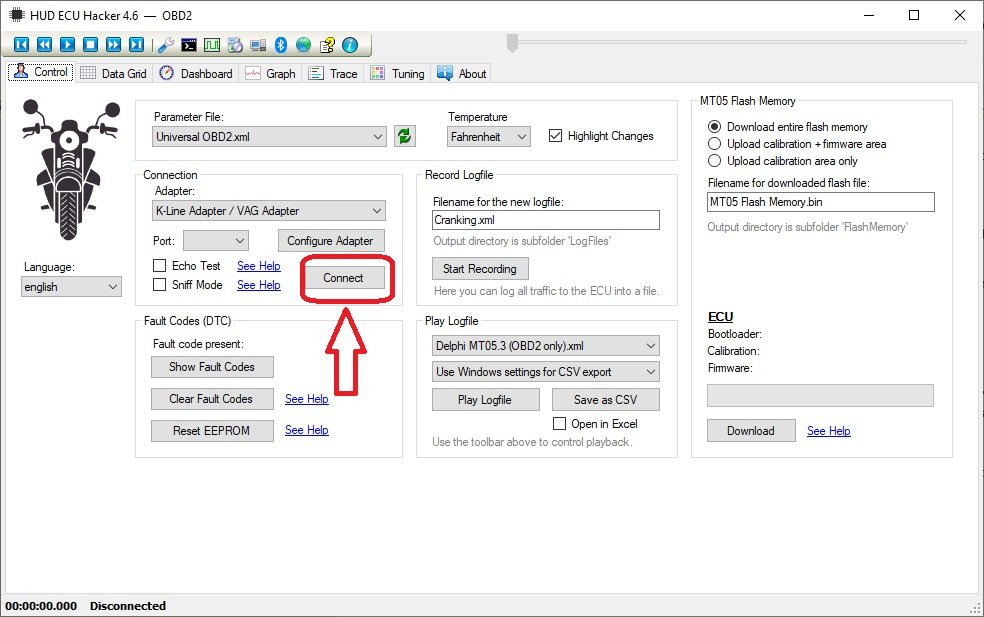






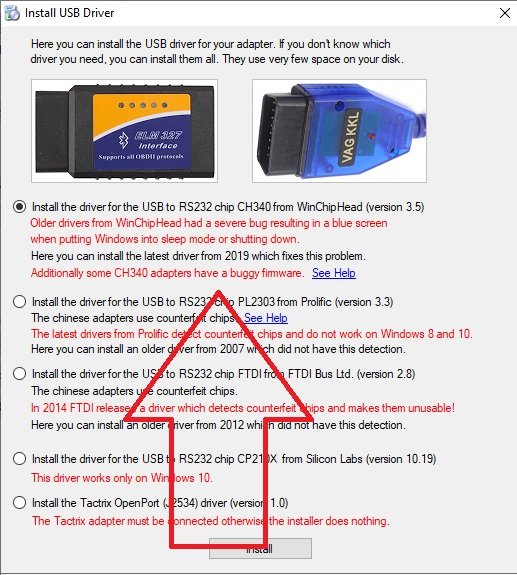




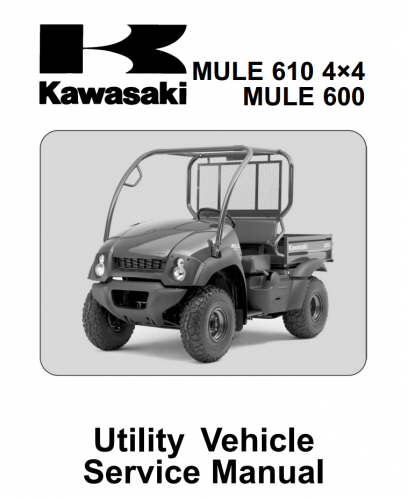
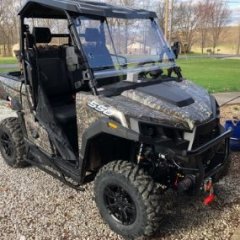

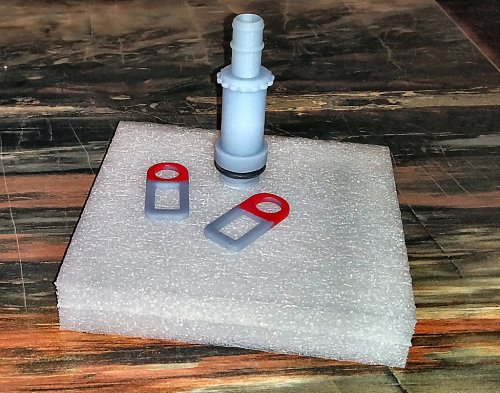
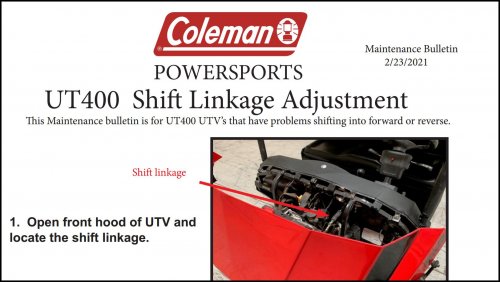
.thumb.jpeg.066fe53fd45b5795c37b2d989ac3a506.jpeg)





